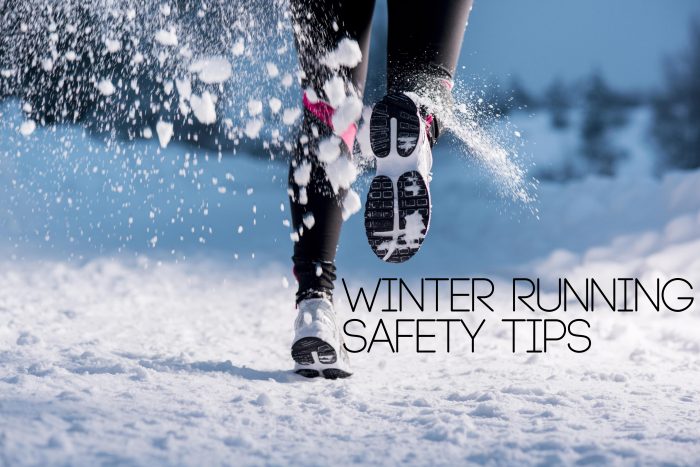Winter Running Safety Tips
Winter Running Safety Tips

It takes determination to run during the winter. When it’s frigid outside, most of us would rather stay bundled up in the heated indoors. For those of you with a New Year’s Resolution to get in shape, you may need to bare the cold and take a jog outside. Once you get adjusted to the temperature, keeping active in the cold weather can help protect you from seasonal depression and keep you in shape.
Exercising in cold weather can benefit your health in more ways than one.
- A little Vitamin D exposure can help defeat winter blues.
- Your body will produce endorphins as it fights to stay warm.
- When it’s cold, it becomes more strenuous work for your heart to distribute blood throughout your body, which can strengthen your heart muscle. (However, if you have heart problems, this can negatively impact your heart health.)
- More calories will be burned during an outdoor workout. This is because your body is working harder to maintain its core temperature.
You must prepare yourself to face the elements before you can reap the benefits. The following tips will help you prepare for your winter jog.
- Dress in layers. The first layer should be a synthetic material, such as polyester. Avoid wearing cotton. Polyester is light, breathable, and non-absorbent. If the temperature is cold enough, add an insulating layer, like fleece. You’ll only need an insulating layer if that temperature is below 10 degrees. Then, wear a wind/waterproof layer, such as nylon. As a rule of thumb, dress as if it’s much warmer than it is–once you start running, your body will warm up pretty quickly.
- Avoid running outside if the weather is below 0, or if the windchill hits negative temperatures.
- Wear a pair of wool socks and running gloves to keep your hands and feet warm. Our hands and feet lose heat quickly because the body is designed to keep our vital organs warm first. In cold temperatures, there is a reduction of blood flow through our feet and hands.
- In cold temperatures, our muscles tighten up more. This increases the risk of pulling a muscle while running outside in cold weather. Be aware of this, and try to take it easy on yourself during outdoor winter workouts.
- If you get wet, head home and change your clothes immediately. Wet clothes, cold weather, and wind do not mix well. These conditions lead to an increase in risk of hypothermia.
- Stay hydrated.
- Try to go on your runs when it’s daylight. Avoid running during sunrise or sunset, when the temperature is cold and it’s dark outside.
![[COMPANY]](https://2.websitesbyica.com/wp-content/uploads/2018/10/agent-logo.png)










